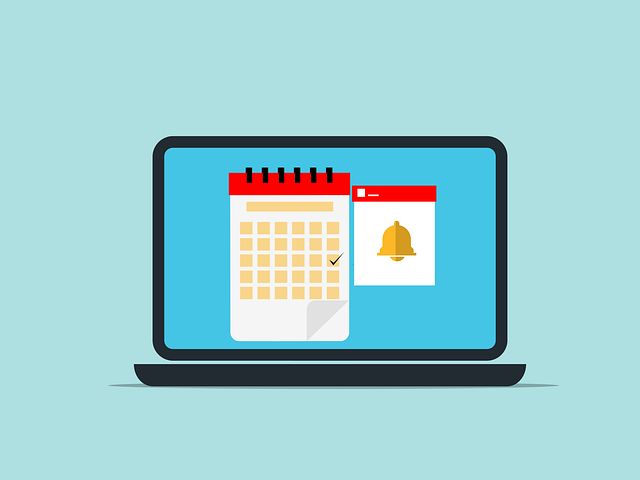Patient no-shows are a significant challenge in healthcare, leading to inefficient resource allocation and health risks. To combat this, clinics are adopting appointment alert systems using SMS, email, or phone calls as reminder services. This modern approach improves patient engagement, reduces no-shows, enhances operational efficiency, and fosters a healthier community. Digital reminder systems outperform traditional methods like paper reminders or phone calls, which often led to missed appointments. An efficient appointment alert system offers advantages such as increased punctuality, improved patient engagement, streamlined admin tasks, better healthcare outcomes, and optimized scheduling. Implementing this system requires a multi-modal notification strategy with personalized alerts and regular performance evaluations. The right technology, including SMS, email, and call functionalities, ensures effectiveness. Measuring success through KPIs like no-show rates, attendance improvement, and patient satisfaction is crucial for continuous optimization.
Patient no-shows are a significant challenge in healthcare, impacting efficiency and resources. To combat this, technology-driven solutions like appointment alert systems via SMS, email, or calls offer promising strategies. This article explores the profound impact of patient no-shows, delves into the advantages of digital reminders over traditional methods, and provides an implementation guide for effective appointment alert systems. Discover how these strategies can enhance attendance rates and streamline healthcare operations through efficient technology integration.
- Understanding the Impact of Patient No-Shows
- Traditional Methods vs. Digital Reminders
- Benefits of an Appointment Alert System
- Implementation Strategies for Effective Alerts
- Choosing the Right Technology for Alerts
- Measuring Success and Continuous Improvement
Understanding the Impact of Patient No-Shows

Patient no-shows are a significant challenge for healthcare providers, leading to inefficient resource utilization and potential risks to patient health. In today’s fast-paced world, even a simple forgetfulness or change in plans can result in missed appointments. These no-shows contribute to delays in treatment, increased administrative burdens, and higher costs for both patients and healthcare institutions. Recognizing this issue, many clinics are adopting innovative solutions like appointment alert systems that leverage technology to combat this growing problem.
By implementing clinic reminder automation, no-show prevention tools, or even a simple reminder call service, healthcare facilities can enhance patient engagement and reduce unnecessary absences. Automated reminders via SMS, email, or phone calls have proven effective in improving attendance rates by keeping patients informed and engaged with their healthcare appointments. This proactive approach not only benefits the overall operational efficiency of the clinic but also ensures that patients receive timely care, fostering a healthier community.
Traditional Methods vs. Digital Reminders

In the past, relying on traditional methods like paper reminders or phone calls was the norm for alerting patients about their appointments. However, these approaches often fall short in ensuring timely attendance due to factors like forgotten papers, missed calls, or changes in personal schedules. As a result, no-show rates remain a significant concern in healthcare settings.
Digital reminder systems, on the other hand, offer a modern solution with appointment alert systems that utilize SMS, email, or automated call services. These technology-driven reminders provide a more effective and efficient way to engage patients. By delivering timely notifications, these digital tools enhance medical attendance boost, minimize no-show prevention tools, and ultimately improve overall healthcare operational efficiency.
Benefits of an Appointment Alert System

An appointment alert system offers a multitude of benefits for healthcare providers and patients alike. By leveraging technology to send automated reminders via SMS, email, or phone calls, healthcare facilities can significantly reduce patient no-shows and improve overall attendance rates. These reminders act as a gentle nudge, ensuring patients remember their appointments and arrive on time. This is particularly beneficial for clinics with high patient volumes, where manual reminder systems can be cumbersome and prone to errors.
Moreover, an effective appointment alert system goes beyond no-show prevention tools. It fosters better patient engagement and satisfaction by demonstrating a clinic’s commitment to their well-being. Clinic reminder automation also streamlines administrative tasks, allowing healthcare professionals to focus more on direct patient care. This results in a medical attendance boost, leading to improved healthcare outcomes and a more efficient healthcare delivery system.
Implementation Strategies for Effective Alerts

Implementing an efficient appointment alert system requires a strategic approach to ensure maximum engagement and positive outcomes. One key strategy is integrating multiple notification channels like SMS, email, and phone calls. This multi-modal approach increases the chances of reaching patients, as different individuals may prefer varying communication methods. For instance, sending text reminders via SMS can be effective for younger demographics, while email might be more suitable for older patients or those with regular internet access.
Additionally, healthcare providers should focus on personalization and timely delivery. Customizing alerts with patient names, appointment details, and locations enhances the sense of individual attention. Sending these reminders a day or two before the scheduled time is optimal, as it allows patients to prepare while giving ample time for rescheduling if needed. Regular evaluation of the clinic reminder automation system’s performance is crucial, enabling providers to refine strategies and improve healthcare scheduling reminders’ effectiveness.
Choosing the Right Technology for Alerts

Choosing the right technology for appointment alert systems is pivotal to ensure their effectiveness in boosting medical attendance rates. In today’s digital age, a robust clinic reminder automation system should seamlessly integrate SMS, email, and call functionalities. These multi-channel alerts not only increase patient engagement but also account for varying communication preferences. For instance, younger patients might prefer SMS while older demographics may lean towards phone calls.
Implementing an efficient healthcare scheduling reminders system requires careful consideration of user experience and platform accessibility. A user-friendly interface that allows patients to easily manage their alert settings can significantly enhance the system’s success. Additionally, ensuring compatibility across different devices and operating systems is crucial to avoid any technological barriers. This holistic approach ensures that the appointment alert system effectively reduces patient no-shows and improves overall healthcare service delivery.
Measuring Success and Continuous Improvement

Measuring success is a key aspect of any effective appointment alert system. By tracking key performance indicators (KPIs) such as no-show rates, attendance improvement, and patient satisfaction scores, healthcare providers can gauge the impact of technology-driven reminders. Advanced analytics tools can help identify patterns, pinpoint areas for improvement, and optimize the reminder call service to ensure maximum effectiveness. Regularly reviewing these metrics allows for continuous improvement, ensuring the appointment alert system remains a powerful tool in no-show prevention strategies.
Additionally, integrating feedback from patients and healthcare professionals is vital. This collaborative approach fosters a deeper understanding of user experiences with clinic reminder automation. By incorporating insights from all stakeholders, the reminder service can be refined to better suit individual patient needs, enhance communication, and ultimately drive higher attendance rates.
